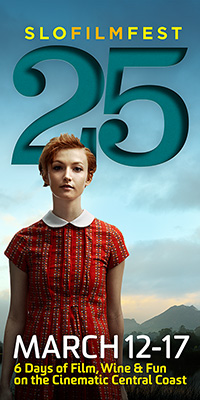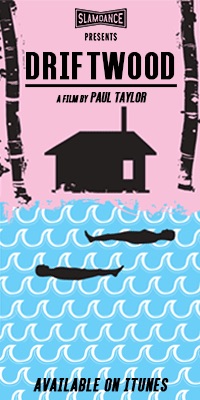A few months back, I was thinking about some of the movies I enjoyed seeing at film festivals and the weak reception they received on release in terms of press and critical coverage. I wrote this piece for The Tracking Board asking whether film festivals are really helping the independent film business or not. I don’t want to repeat those thoughts about the problems too many independent films and filmmakers are suffering when trying to bring their movies into theaters against the pervasive superhero and Star Wars movies. Instead, I want to look at one of the biggest positives about regional film festivals that I can think of, and that’s about keeping alive one of the simplest movie traditions, and that’s the idea of seeing movies with other people.
This might seem simple enough, because it’s something we do regularly, but it’s changing rapidly with so many other options to view movies that make it easier to lounge at home and not have to deal with other people, who may not act or think the way we want them to.
I’m based in New York City, and I see most of the movies I write about or review at press screenings set up by the studios or independent publicity houses. I’ve noticed in recent months these press screenings, especially for smaller films – indies, foreign films and docs – are becoming less populated. That and the cost to rent screening rooms has made it so that many of those smaller films don’t get press screenings. The only way to seem is via online screening links.

What was a familiar sight (and home) to a number of NYC-based film critics: The Magno Screening Room
Last week, New York’s Magno Screening Room closed after 68 years of being one of the primary places where film critics see the movies they review. It’s a huge loss for the critical community and a sign of the times when what once was the busiest screening room in the city, throws in the towel. It’s obvious many people are now happy to watch movies at home via streaming links, or on their phones and tablets via Netflix and other streaming services. While you can see lots of movies this way, there’s no doubt in my mind that the movies that really have an impact on us are the ones we watch as a communal experience with others.
Another thing that happened last week is that I attended a New York screening of a really good doc which premiered at DOC-NYC, a New York-based doc festival, last November. It was picked up by one of the more prominent indies, guaranteeing it a theatrical release, but before the movie, the director thanked everyone for coming out, because she knew that every movie that plays in theaters is competing with so many other forms of entertainment, including TV, sports, video games, etc. That was an interesting note only because she was absolutely right. It’s very hard to get people to leave the comfort of their homes and go out to the movies, and docs just aren’t as sexy as the latest franchise offerings. (Thankfully, that seems to be changing in a big way with the success of RBG and Won’t You Be My Neighbor, both which played like gangbusters at Sundance, as well as Three Identical Strangers, which opened last week.) As with many other films I’ve seen with an audience, the experience of seeing that doc with other people added to my enjoyment of the film, as I enjoyed the laughter and reactions to what was happening on screen.

RBG
This is where film festivals come in, because as the title suggests, it is sometimes the only chance for many filmmakers to get their films seen the way most movies are meant to be seen – on a theater screen with an audience that will help enhance the experience with their reactions.
I feel like it’s my job as a film critic to see as many different kinds of movies as possible, which is partially where film festivals come in, since the best festivals don’t just offer movies with big well-known stars, but also offer the best that the rest of the world has to offer. Again, very few of these movies will get a theatrical audience the way they might at a film festival.
While there are many destination festivals like Sundance, Toronto, Cannes, etc., their appeal is often as much about seeing a movie with the audiences that attend those festivals, as it is to see a movie before others. You really can’t beat seeing a movie at the Eccles Theater during Sundance when even the smallest of gags within a movie might receive thunderous laughter from an audience openly receptive to what independent filmmakers are offering. Very few movies that premiere at the Eccles will ever play in a theater nearly as big or packed again, and sadly, that’s true for many other film festivals.

WINTER’S BONE
Many times, early reviews from festivals are what’s necessary to get distributors and future audiences interested in a movie they may never have heard of otherwise. Films like Debra Granik’s Winter’s Bone, Benh Zeitlin’s Beasts of the Southern Wild and Lee Daniels’ Precious might never have found audiences, let alone carried the buzz from Sundance all the way to Oscar night, without their festival premieres. Sure, all those movies would stand up if seen in any venue or format, but audience buzz is often critical to a movie ever being seen after a festival. (This is also why it’s a shame that none of the bigger trades like Variety and the Hollywood Reporter bother to cover regional festivals, since there’s a lot of talent out there not in New York or L.A.)
There are many in the industry still clinging onto the theatrical experience, from filmmakers like Christopher Nolan and Quentin Tarantino, to companies like IMAX and Moviepass, but you still can’t really beat the experience of watching a movie, which some people have never even heard of, at a film festival. Hands down some of the best screenings I’ve ever attended have been at film festivals. In some cases, I’ve never had another chance to see those movies with an audience.
Sometimes but not often, having your film play a festival might be a double-edged sword, because as a filmmaker, it’s better to have film critics reviewing your movie for its theatrical release rather than at festivals months (or longer!) before general audiences will have a chance to see your movie. It’s easy to forget about a film — even a great high-profile Sundance premiere like Jason Reitman’s Tully — when it’s almost three months between the raves it gets at Sundance and its nationwide release. Moviegoing audiences have just as short attention span as anyone else.

FOLK HERO AND FUNNY GUY
Other films sometimes get lost in the shuffle at bigger festivals, and in the case of a movie like Jeff Grace’s wonderful Folk Hero and Funny Guy or others, seeing the movie at Tribeca or Oxford or any of the other film festivals where it played would have been my only chance to see the movie with an audience. As far as I know, it never received an actual press screening, and its theatrical release was a minimal commitment that barely came with anything in the way of advertising. I’m not sure the movie would have even been on my radar if not for those festivals, and that continues to be the case with too many films to mention individually.
I’m not immune to the influence of others around me, and sometimes hearing others laugh or sniffling in the dark around you lets you know that it’s okay to laugh or cry at something you’re watching. It’s rarely fun to experience the range of emotions a good movie offers by watching it alone at home.
This is why people go to the movies, not just to see the craft and storytelling on screen, but also to interact with others about the movie they’ve just seen, and you really can’t beat film festivals for bolstering that experience.








READER COMMENTS